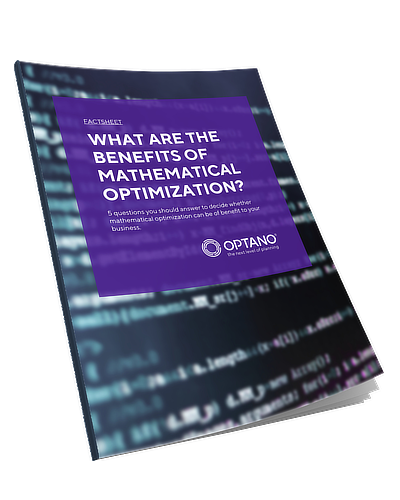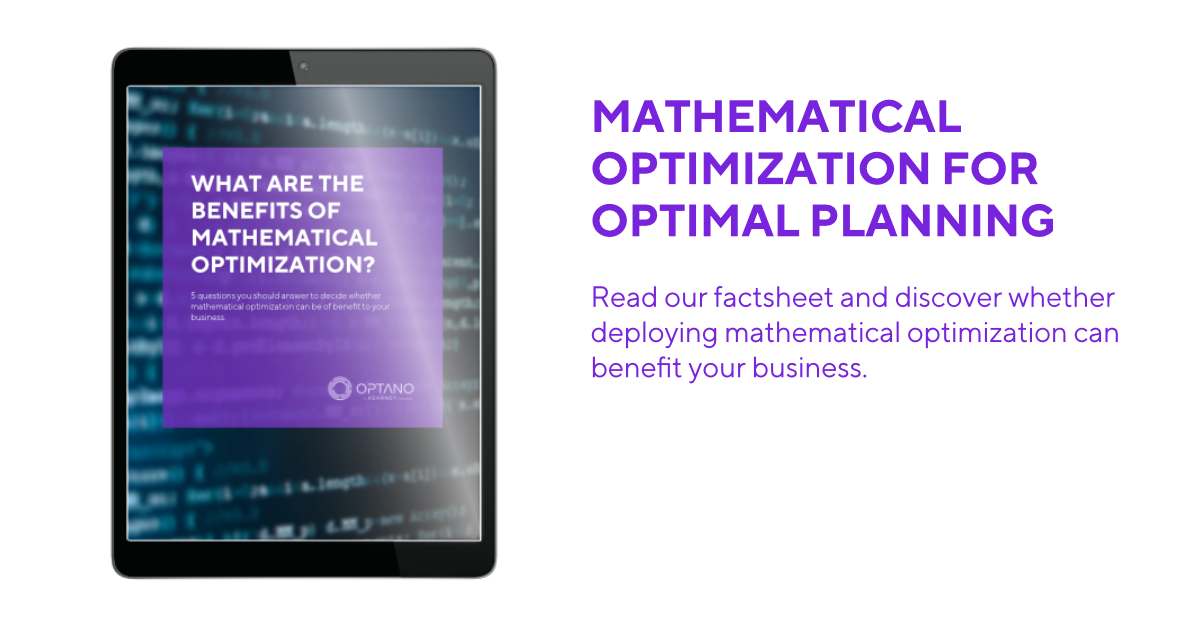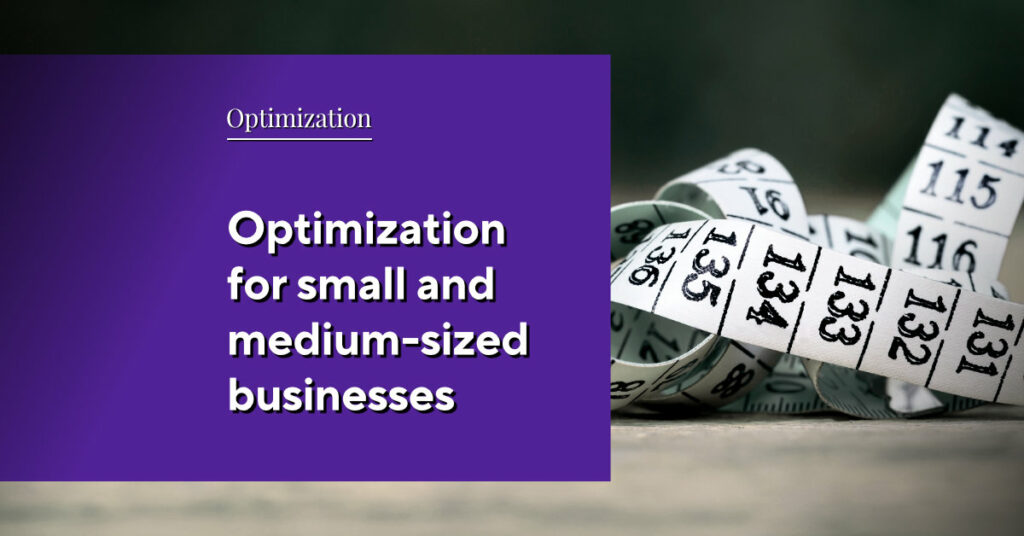Accurate sales forecasts for
higher efficiency
We all know the TV weather forecasts. Just recently we relied on them and planned a walk. After all, a pleasant day with temperatures of about 20°C had been forecast. That Sunday afternoon saw my family trekking miserably through the woods in drizzle with temperatures reaching just 17°C. Did the weather forecaster get it wrong?
If we had not relied on the TV weather forecast and checked the data provided by the Weather Service, then we would not have had this unpleasant walk. This is because the Weather Service data indicated that there was only a 65% probability of temperatures around 20°C and that fluctuations of +/-3.25°C could be expected. Furthermore, it forecast a 45% likelihood of rain. Drizzle and 17°C were covered in the forecast variability. Therefore, the TV forecast was not completely wrong, just not very accurate.
It is important to understand that a forecast – whether it concerns the weather or the sales volume of products – does not only consist of forecast values. Each realistic insight into the future should also consider potential uncertainties.
When we apply this to sales markets, we can guard against these uncertainties by having an inventory buffer. The stocks, as well as the inventory buffer, should not be too high, of course. On the other hand, the production volume should also not be calculated at too low a level. An accurate sales forecast can help you to use the resources in your company efficiently.
The impacts of having no or inaccurate sales forecasts
High forecasting accuracy versus high adjustability
Many companies already make use of forecasting to manage their procurement, production, inventory and capacity. The accuracy of the forecasts can have a direct impact on how efficient a business is.
If companies rely on adjustability instead of high forecasting accuracy, this can have an immediate influence on its total profitability. In this case, being able to adjust means responding to demand uncertainty by taking the following measures, all of which have one common disadvantage: they can potentially lead to very high costs.
A high level of safety stock, equivalent to several months’ to a year’s sales volume, to compensate for demand uncertainties.
However, having a large inventory does also mean that you have corresponding costs. Furthermore there is always the risk that products become obsolete. In this case, companies are compelled to sell them at a loss on the market. This has a negative impact on profit.- Extending capacity by investing in machinery and staff in order to meet increased demand.
If this machinery is only used to balance the peaks in demand, it has a negative impact on the company balance sheet.
Express manufacturing which is performed during sudden peaks in demand in order to ensure customer satisfaction.
This is where the calculation is generally very high. One cause of this can be attributed to the procurement costs which are far higher due to low order volumes and fast delivery than they would be with well-planned and well-negotiatied purchasing.
The business thus has to ask the question: what is more economical in the end? Adjusting quickly which causes high costs in production and procurement? Or having an accurate forecast which enables companies to optimally coordiante sales and production ?

Are you interested in our factsheet?
What are the benefits of mathematical optimization?
The more accurate the forecast, the better
The sales forecast - a short definition
The sales forecast, as the name implies, predicts future sales. It is mainly based on historic sales data. Yet the economic climate, current sales trends as well as industry comparisons can also be considered when generating a sales forecast.
Many different methods can be applied to generate a sales forecast. As previously mentioned, they are largely based on historic data which can often be extracted from ERP and CRM systems. Industry-specific information from authorities, trade associations and other external agencies as well as future consumer behavior determined by conducting surveys are examples of further data which can be included to generate forecasts. Which data and which procedures are appropriate for a sales forecast vary from company to company and must be decided upon individually.
The advantages and disadvantages of sales forecasts
Before you implement sales forecasts in your business, it is important to know the advantages and disadvantages involved in using them.
The advantages of sales forecasts
Sales forecasts can support your resource planning in production and logistics. They enable production to generate the predicted volume within a fixed time frame. In this way, supply and demand can be synchronized and inventory reduced.
The regular analysis of sales data lets you identify the sales trends and changes in customer behavior early on. The advantage here is that you can make adjustments based on expectations. This is a particularly important aspect in production capacity planning as without this adjustment either too few or too many products would be manufactured.
With the help of accurate sales forecasts you can increase customer satisfaction. You can meet the needs and demands of consumers today, but also in the future.
The disadvantages of sales forecasts
Sales and marketing teams spend a lot of time and resources on generating sales forecasts when these are done manually, for example with Excel.
Furthermore, forecasts which have been generated by sales employees are not accurate enough. The accuracy can be influenced by excessive optimism but also by the caution of other individuals.
Sales forecasts which have been generated for a certain period of time, such as a quarter, are not agile enough. A recession which starts in the middle of a quarter should certainly be considered in the forecast.
This shows us that the disadvantages of sales forecasts cannot be found in the forecasts themselves but in the process of generating them: they create too much work, they are too inaccurate and not agile. But there is a solution: mathematical optimization.
More interesting articles
Generate sales forecasts with mathematical optimization and OPTANO
Sales forecasts are a difficult and unpleasant task in many companies. Employees are particularly sceptical with regard to the amount of time this involves when generating them manually. As a result many companies dispense with them completely or depend on the experience their sales teams have gathered. This leads to a rather inaccurate forecast of the sales volumes.
However, a sales forecast can be less time-consuming than you think as there is an efficient and user-friendly tool to support you. With mathematical optimization it is possible to move away from manually generated Excel files and towards a faster, fact-based solution.
Data analytics as a basis for your sales forecasts
Many companies have an extensive historic data base on their sales volumes; e.g. in their ERP and CRP systems. Yet because of the data volume and its complexity, it is often difficult to turn this into useful information. This is where analytical procedures such as Predictive and Prescriptive Analytics can help.
To generate forecasts for decreasing, increasing or seasonal product demands, optimization software such as OPTANO applies efficient mathematical models in which the essential aspects of a supply and demand feature can be mapped. These continue to be trained with machine learning algorithms.
Know the future with the OPTANO Predictive Blueprint
OPTANO has developed the Predictive Blueprint. As a machine learning (ML) function it enables the training of predictions and the performance of regression analyses. With the use of OPTANO, we can draw directly on the results of predictive analytics in the area of prescriptive analytics, i.e. the implementation of optimization models of planning decisions. This means that optimal planning is based on the best possible prediction of the future, using insights of the past.
Accurate sales forecasts with OPTANO
OPTANO also lets you check your forecasts quickly and adjust them as necessary so that any changes to your planning parameters can always be taken into consideration.
In a nutshell
OPTANO provides:
- Increased accuracy of sales forecasts
- Optimal use of your available data base
- Automization of manual processes
- Agility inconstantly changing priorities
Do sales forecasts also work in times of uncertainty?
A sales forecast can be a good indicator for future sales in a stable market. The current volatile developments of the markets and demand behavior make planning more complex as the forecasts are less reliable.
In such situations it is particularly important to respond quickly to changed parameters – such as supply chain disruptions or changes in customers’ demands – if a company wants to survive. Here it is helpful to have answers to questions about the impacts such extraordinary circumstances can have on your company.
By adjusting your guidelines to the new situation with the support of what-if scenarios, you obtain recommendations on which future action you should take. These can help you make the right decisions, even if your sales forecast has collapsed. Planning software such as OPTANO enables this decision-making with scenario data – even in times of uncertainty.
Would you like to learn more?
If you would like to find out whether mathematical optimization can benefit your business, we recommend that you download our factsheet “What are the benefits of mathematical optimization?”.
And if you would like to learn more about how OPTANO can improve your planning processes, or if you have any further questions, just contact us. We look forward to talking to you about your sales forecasting. Alternately you can send us an e-mail and we will contact you in due course.
An accurate weather forecast is also useful
And we have also learnt something for our future excursions: It is not enough to trust the weather forecaster’s inaccurate weather report. Of course we could simply pack a raincoat and umbrella into our rucksack. But who wants to carry more than is necessary? This is why it makes sense to check the Weather Service’s more accurate forecast as well.
Have you got your copy of our factsheet on this topic yet?

In our factsheet “What are the benefits of mathematical optimization?” we ask 5 questions to help you assess whether mathematical optimization brings benefits to your organization.
To obtain our factsheet, all you need to do is enter your contact details in the space below. A pop-up window will then open to download the whitepaper. Please note that by providing us with your email address, you agree that we may contact you on this topic. You may revoke this agreement at any time by contacting privacy@optano.com.






